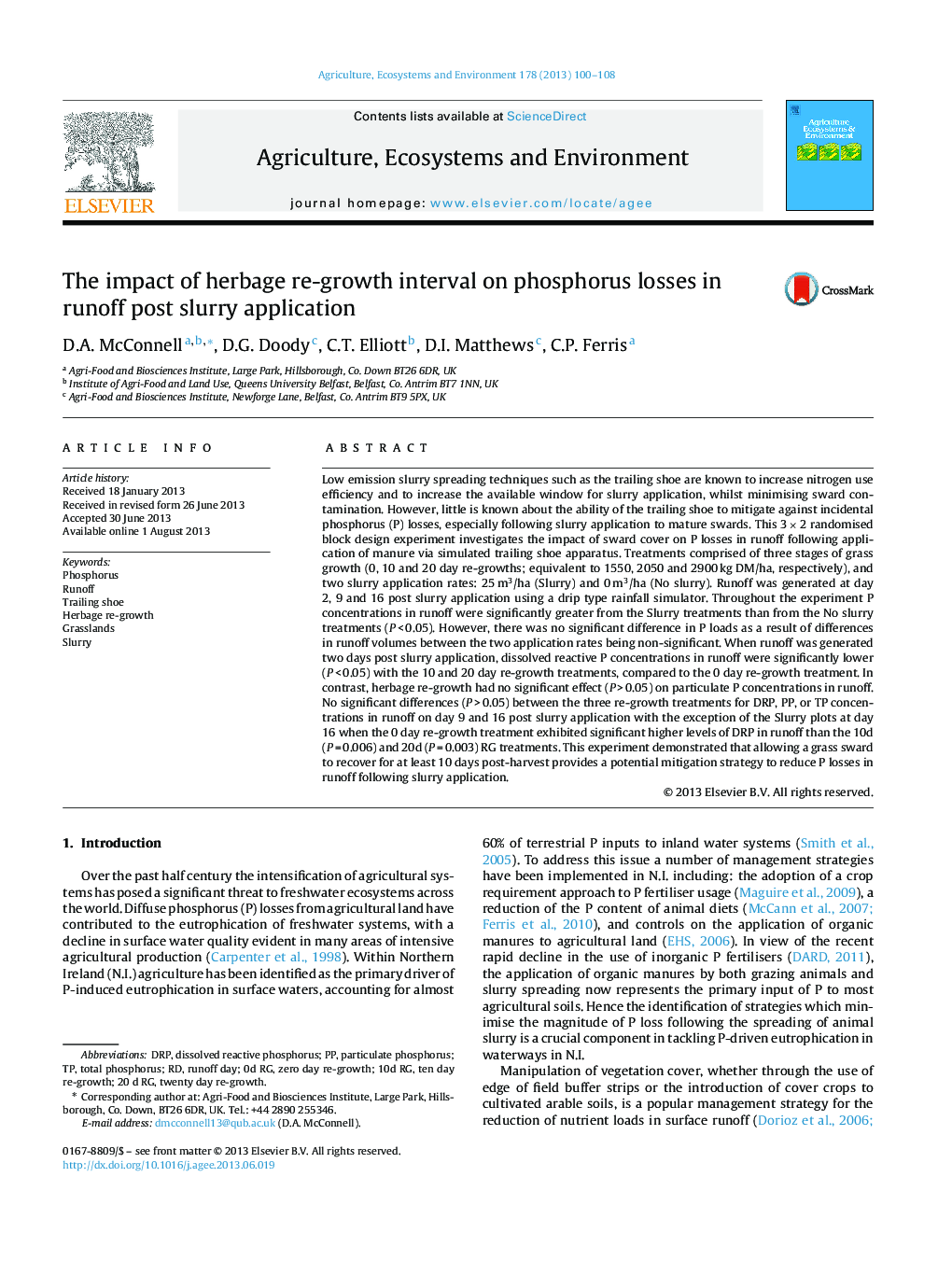| کد مقاله | کد نشریه | سال انتشار | مقاله انگلیسی | نسخه تمام متن |
|---|---|---|---|---|
| 2414229 | 1552074 | 2013 | 9 صفحه PDF | دانلود رایگان |

• Slurry was applied to grasslands after varying grass regrowth periods.
• 62% reduction in soluble P concentrations in runoff after 10 days grass regrowth.
• Particulate P concentration was unaffected by herbage re-growth period.
• Delaying slurry application is a potential measure to reduce soluble P export.
Low emission slurry spreading techniques such as the trailing shoe are known to increase nitrogen use efficiency and to increase the available window for slurry application, whilst minimising sward contamination. However, little is known about the ability of the trailing shoe to mitigate against incidental phosphorus (P) losses, especially following slurry application to mature swards. This 3 × 2 randomised block design experiment investigates the impact of sward cover on P losses in runoff following application of manure via simulated trailing shoe apparatus. Treatments comprised of three stages of grass growth (0, 10 and 20 day re-growths; equivalent to 1550, 2050 and 2900 kg DM/ha, respectively), and two slurry application rates: 25 m3/ha (Slurry) and 0 m3/ha (No slurry). Runoff was generated at day 2, 9 and 16 post slurry application using a drip type rainfall simulator. Throughout the experiment P concentrations in runoff were significantly greater from the Slurry treatments than from the No slurry treatments (P < 0.05). However, there was no significant difference in P loads as a result of differences in runoff volumes between the two application rates being non-significant. When runoff was generated two days post slurry application, dissolved reactive P concentrations in runoff were significantly lower (P < 0.05) with the 10 and 20 day re-growth treatments, compared to the 0 day re-growth treatment. In contrast, herbage re-growth had no significant effect (P > 0.05) on particulate P concentrations in runoff. No significant differences (P > 0.05) between the three re-growth treatments for DRP, PP, or TP concentrations in runoff on day 9 and 16 post slurry application with the exception of the Slurry plots at day 16 when the 0 day re-growth treatment exhibited significant higher levels of DRP in runoff than the 10d (P = 0.006) and 20d (P = 0.003) RG treatments. This experiment demonstrated that allowing a grass sward to recover for at least 10 days post-harvest provides a potential mitigation strategy to reduce P losses in runoff following slurry application.
Journal: Agriculture, Ecosystems & Environment - Volume 178, 15 September 2013, Pages 100–108